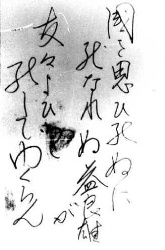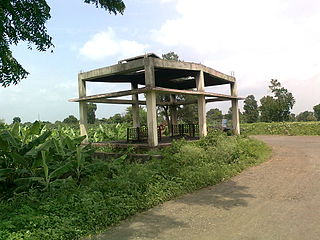 W
WIn some schools of Buddhism, bardo or antarābhava is an intermediate, transitional, or liminal state between death and rebirth. The concept arose soon after Gautama Buddha's death, with a number of earlier Buddhist schools accepting the existence of such an intermediate state, while other schools rejected it. The concept of antarābhava, an intervening state between death and rebirth, was brought into Buddhism from the Vedic-Upanishadic philosophical tradition. Later Buddhism expanded the bardo concept to six or more states of consciousness covering every stage of life and death. In Tibetan Buddhism, bardo is the central theme of the Bardo Thodol, the Tibetan Book of the Dead, a text intended to both guide the recently deceased person through the death bardo to gain a better rebirth and also to help their loved ones with the grieving process.
 W
WThe Bardo Thodol, commonly known in the West as The Tibetan Book of the Dead, is a terma text from a larger corpus of teachings, the Profound Dharma of Self-Liberation through the Intention of the Peaceful and Wrathful Ones, revealed by Karma Lingpa (1326–1386). It is the best-known work of Nyingma literature. In 1927 the text was one of the first examples of both Tibetan and Vajrayana literature to be translated into a European language and arguably continues to this day to be the best known.
 W
WObon or just Bon is a Japanese Buddhist custom to honor the spirits of one's ancestors. This Buddhist–Confucian custom has evolved into a family reunion holiday during which people return to ancestral family places and visit and clean their ancestors' graves when the spirits of ancestors are supposed to revisit the household altars. It has been celebrated in Japan for more than 500 years and traditionally includes a dance, known as Bon Odori.
 W
WThe death poem is a genre of poetry that developed in the literary traditions of East Asian cultures—most prominently in Japan as well as certain periods of Chinese history and Joseon Korea. They tend to offer a reflection on death—both in general and concerning the imminent death of the author—that is often coupled with a meaningful observation on life. The practice of writing a death poem has its origins in Zen Buddhism. It is a concept or worldview derived from the Buddhist teaching of the three marks of existence , specifically that the material world is transient and impermanent , that attachment to it causes suffering , and ultimately all reality is an emptiness or absence of self-nature . These poems became associated with the literate, spiritual, and ruling segments of society, as they were customarily composed by a poet, warrior, nobleman, or Buddhist monk.
 W
WHell money is a form of joss paper printed to resemble legal tender bank notes. The notes are not an official form of recognized currency or legal tender since their sole intended purpose is to be offered as burnt offerings to the deceased as a solution to resolve their assumed monetary problems in the afterlife. This ritual has been practiced by the modern Chinese and across East Asia since the late 19th century. Early 20th century examples bore resemblance to minor commercial currency of the type issued by businesses across China until the mid-1940s.
 W
WHungry ghost is a concept in Chinese Buddhism, Chinese traditional religion, Vietnamese Buddhism, Vietnamese traditional religion, Japanese Buddhism and Tibetan Buddhism, representing beings who are driven by intense emotional needs in an animalistic way. The terms 餓鬼 èguǐ and quỷ đói, literally "hungry ghost", are the Chinese and Vietnamese translation of the term preta in Buddhism. "Hungry ghosts" play a role in Chinese Buddhism, Vietnamese Buddhism and Taoism as well as in Chinese folk religion and Vietnamese folk religion. The term is not to be confused with the generic term for "ghost" or damnation, 鬼 guǐ. The understanding is that all people become such a regular ghost when they die, and would then slowly weaken and eventually die a second time. Hungry ghosts, by contrast, are a much more exceptional case, and would only occur in very unfortunate circumstances, such as if a whole family were killed or when a family no longer venerated their ancestors.
 W
WMara, in Buddhism, is the demonic celestial king who tempted Prince Siddhartha by trying to seduce him with the vision of beautiful women who, in various legends, are often said to be Mara's daughters.
 W
WA śmaśāna is a Hindu crematory ground, where dead bodies are brought to be burnt on a pyre. It is usually located near a river or body of water on the outskirts of a village or town; as they are usually located near river ghats they are also called smashan ghat.
 W
WSokushinbutsu are a kind of Buddhist mummy. The term refers to the practice of Buddhist monks observing asceticism to the point of death and entering mummification while alive. They are seen in a number of Buddhist countries.
 W
WIn East Asian and Buddhist mythology, Yama is a dharmapala said to judge the dead and preside over the Narakas and the cycle of afterlife saṃsāra.